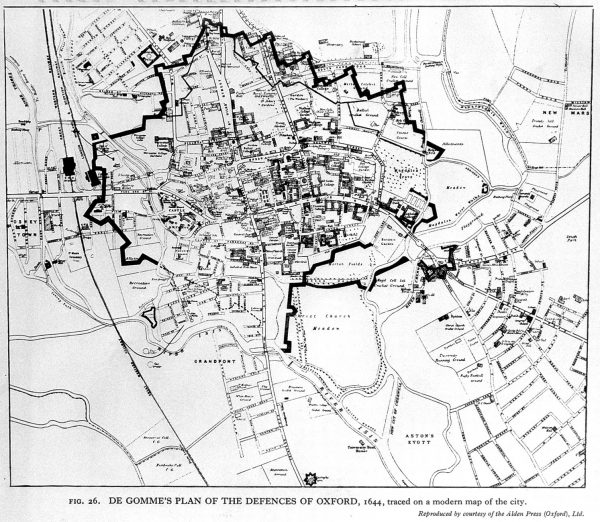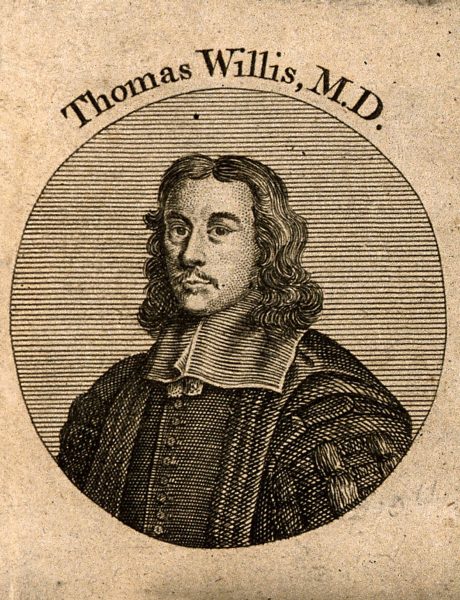Thomas Willis

A map of the defences of Oxford during the Civil War. Thomas Willis fought for the royalist cause to defend the city (image credit: Wellcome Collection, reproduced under a CC BY licence).
Prior to the English Civil Wars, Thomas Willis (1621-1675) lived with his family near to Oxford, where Willis was educated and showed an early interest in medicine. During the Wars, his father and stepmother died during an epidemic that broke out in Oxford in 1643 (Read more about this here). Following this, Willis served in a regiment of scholars raised by the Earl of Dover for the defence of Oxford in 1644-6. Many of Willis’s comrades from this regiment later submitted petitions to Charles II [link coming soon]. Charles I granted Willis a medical degree in 1646 as a reward for his royalist service and Willis began to practice medicine in Oxford.
Willis became famous for his work in neurology – the study of the nervous system. He named several parts of the brain and has become known as one of the ‘fathers of neuroscience’. However, during the time of the Great Plague, Willis began to gather together notes on the remedies that he had used to treat the plague. These were published in 1691 after his death as A Plain and Easie Method of Preserving (by God’s Blessing) those that are Well from the Plague.

Thomas Willis (image credit: Wellcome Collection, reproduced under a CC BY licence).
Amongst the treatments that Willis recommended for preventing people from catching the plague was:
- A mixture made from herbs, figs, walnuts and salt.
- A vinegar made using ingredients that included marigold flowers, lemon pips and ‘snake-weed’ from America.
- Smoking tobacco through a pipe to prevent ‘poisonous vapours’ from entering the nose and mouth.
- Carrying a pomander (a ball containing spices and other sweet-smelling substances) in the hand or on a stick.
- Stuffing treacle or tar in the nostrils.
For those who had already caught the plague, Willis recommended:
- Praying to God.
- Giving the patient a drink to make them vomit.
- Giving the patient medicines to make them sweat. These included ingredients such as crab’s claws and the powder of dried toad.
- Applying plasters that cause blisters to the armpits and groin to draw out ‘the venom’ from buboes. The ingredients for these plasters included chicken droppings and oil of scorpions. Willis also noted that some doctors recommended applying live frogs to the armpits and groins, replacing the frogs when they died with new ones.
